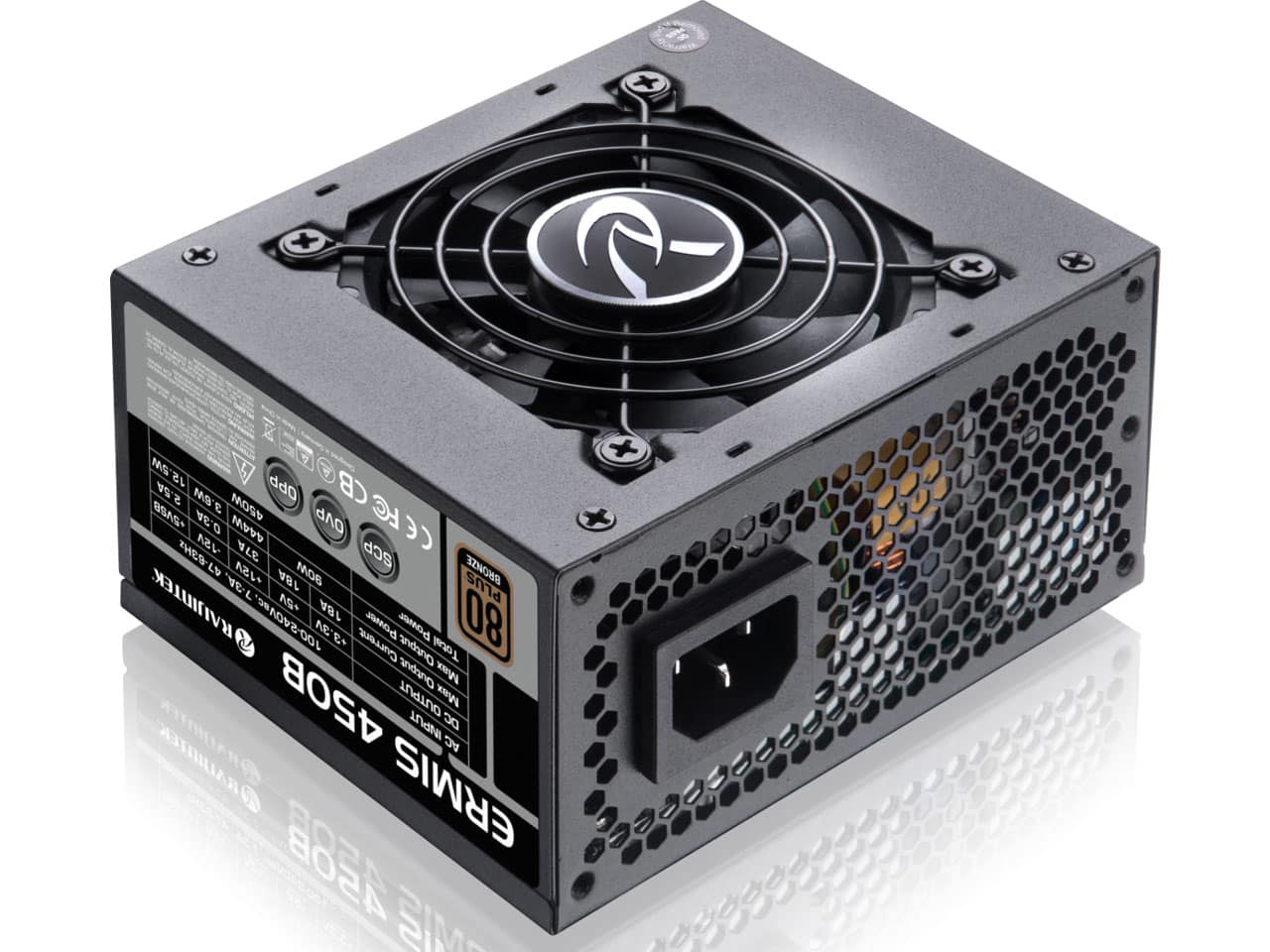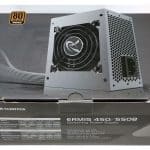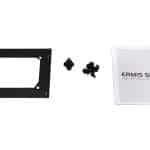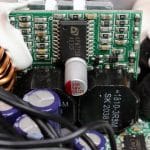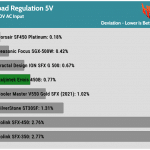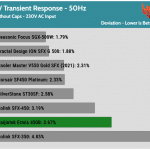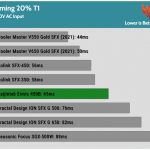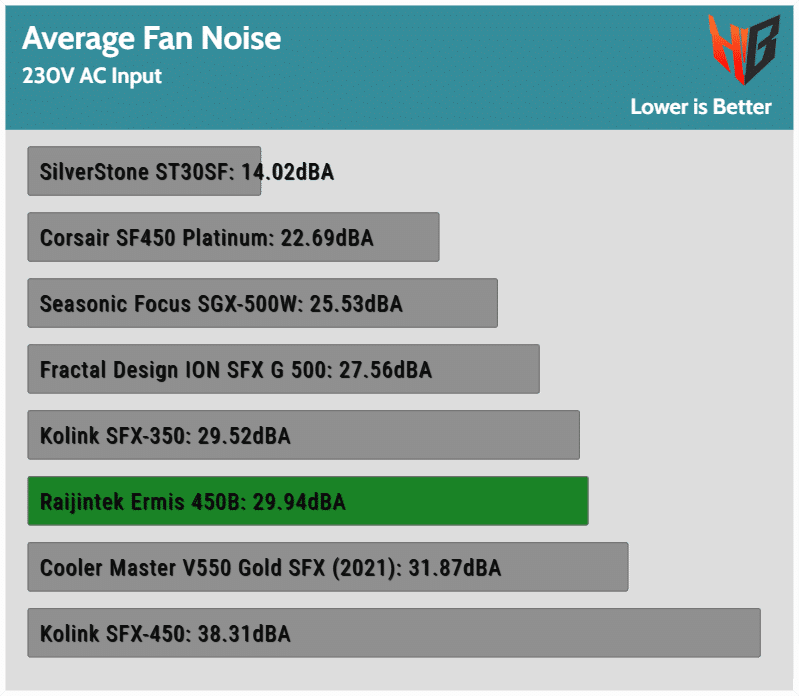The Raijintek Ermis 450B is one of the most affordable SFX power supplies, with a 50 dollar price tag. Should you pay more to get a more capable SFX unit or the Ermis 450B is fine for your system? Read our review to find out!
Raijintek is well known for its high performance per dollar (or euro) products, so I wasn’t surprised by its decision to enter the PSU market with a highly affordable PSU line. What surprised me, though, is that this was an SFX form factor PSU line and not an ATX one. I discussed this with Tony, Raijintek’s soul, and he mentioned that the SFX market is highly interesting since many users prefer compact chassis. I don’t have any market numbers on hand to verify this, but the fact is that lately, more and more brands have entered the SFX market, which was dominated some years ago by SilverStone. Besides the latter brand, Corsair, Asus, EVGA, Cooler Master, and other strong brands have a strong presence in the small form factor PSU market, showing that it is booming. Else, they wouldn’t have invested so much money on these platforms.
I have already evaluated the Ermis 550B on TechPowerUp, so I thought to give a go to its small brother on my site. The Ermis 450B is destined for not demanding systems with low energy consumption dedicated GPUs or integrated into the CPU. You should not try to power an RTX 3070 or 3080Ti with it!
Cybenetics Report- Manufacturer (OEM): Casecom
- Max Power: 450W
- Efficiency: Cybenetics Bronze (84-87%), 80 PLUS Bronze
- Noise: Cybenetics A- (25 – 30 dBA)
- Form Factor: SFX
- Alternative Low Power Mode support: No
- Power 12V: 450W
- Power 5V + 3.3v: 90W
- Power 5VSB: 12.5W
- Cooling: 80mm Sleeve Bearing Fan (DF0801512SEHN)
- Modular Design: No
- High Power Connectors: 1x EPS, 2x PCIe 6+2 pin (single cable)
- Peripheral Connectors: 3x SATA (single cable), 2x 4-pin Molex (single cable)
- ATX/EPS Cable Length: 350mm
- Distance between 4-pin Molex connectors: 200mm
- Dimensions (W x H x D): 125 mm x 65 mm x 100 mm
- Warranty: 3 years
Box & Bundle
The protection inside the box is good, and the bundle includes an SFX-to-ATX adapter. The only problem should you decide to use this PSU in normal dimensions, ATX chassis, will be its short cables.
Protection Features
| OCP | +12 V: >59.6 A (>161.08%), <11.528 V, ripple >200 mV +5 V: >36 A (>200%), <5.124 V +3.3 V: >37 A (>205.56%), <3.359 V, ripple 51.59 mV 5VSB: 3 A (120%), 5.070 V |
| OPP | 593.16 W (131.81%) |
| OTP | Yes (166 °C @ Secondary Side) |
| SCP | 12V to Earth: ✓ 5V to Earth: ✓ 3.3V to Earth: ✓ 5VSB to Earth: ✓ -12V to Earth: ✓ |
| PWR_OK | Proper Operation |
| NLO | ✓ |
| SIP | Surge: – Inrush: NTC Thermistor |
OCP is sky-high on all rails. This is not acceptable because it allows for high ripple at 12V and 3.3V, and on top of that, such high current output can easily kill the PSU under high operating temperatures. Over power protection is also highly set to cope with power spikes. The good news is that over temperature protection (OTP) is alive and kicking! Lastly, the lack of an MOV for surge protection is a con. You could use this PSU with a power strip that includes surge protection to get over this.
Part Analysis
| General Data | – |
| Manufacturer (OEM) | Casecom |
| PCB Type | Double Sided |
| Primary Side | – |
| Transient Filter | 4x Y caps, 3x X caps, 2x CM chokes, 1x DM choke |
| Inrush Protection | NTC Thermistor MF72-3D13 (3Ohm) |
| Bridge Rectifier(s) |
1x GBU806 (600V, 8A @ 100°C)
|
| APFC MOSFETs |
2x
Perfect Intelligent Power Semiconductor PTA20N50A (500V, 10A @ 125°C, Rds(on): 0.3Ohm) |
| APFC Boost Diode |
1x WeEn Semiconductor BYC8X-600 (600V, 8A)
|
| Bulk Cap(s) |
2x HCON (400V, 220uF each or 440uF combined, 105°C, HP)
|
| Main Switchers |
2x
Perfect Intelligent Power Semiconductor PTA20N50A (500V, 10A @ 125°C, Rds(on): 0.3Ohm) |
| PFC / PWM Combo Controller | Champion CM6800UX |
| Topology |
Primary
side: APFC, Double Forward Secondary side: Synchronous Rectification & DC-DC converters |
| Secondary Side | – |
| +12V MOSFETs | 2x Potens Semiconductor PDD6974A-5 (65V, 94A @ 100°C, Rds(on): 3.3mOhm) |
| 5V & 3.3V | DC-DC Converter(s) PWM Controller(s): ANPEC APW7159C |
| Filtering Capacitors | Electrolytic: 11x Asia’x (105°C, TMX) Polymer: 3x NJcon |
| Supervisor IC | Grenery GR8313 (OVP, UVP, SCP, PG) |
| Fan Model | Fly-Upwards DF0801512SEHN (80mm, 12V, 0.25A, Sleeve Bearing Fan) |
| 5VSB Circuit | – |
| Standby PWM Controller | SC2521Q |
This is a platform by Casecom, an OEM with experience in budget platforms. Despite the small PCB, the platform is not overpopulated, and the heatsinks are large enough but with nonexistent fins. Given the unit’s low efficiency, heatsinks are required to keep the internal temperatures in control. The design is outdated, with a double-forward topology on the primary side. The only modern touch is on the secondary side with a synchronous design and DC-DC converters for the minor rails. The parts that Casecom used are of average to low quality. The Asia’x electrolytic caps are rated at 105°C, but this brand is not among the “good” ones. There are also three NJcon polymer caps to help in ripple filtering. I couldn’t find any information on the HCON bulk caps, except capacity and temperature rating. Lastly, the cooling fan is another mystery, provided by a brand I have never heard of. It uses a rifle-bearing, according to the manufacturer, at least. All in all, the parts that Casecom used are low-cost, but the soldering quality is decent.
Load Regulation
Load regulation is tight enough at 12V, 5V, and 5VSB rails and loose at 3.3V.
Ripple Suppression
Ripple suppression is decent, given the price tag. I am not sure how long the PSU’s caps will offer their best performance, though.
Transient Response
Transient response is not good at 12V, where it matters the most, and 3.3V rails. It is also mediocre at 5V.
Hold Up Time
The hold-up time is long, and the power ok signal is accurate. This was a pleasant surprise because usually, in budget units, the bulk caps don’t have enough capacity.
Timings
The PSU doesn’t support Alternative Low Power Modes.
Inrush Current
Inrush current is high.
Efficiency Normal, Light & Super-Light Loads
Efficiency is decent with normal loads, low with light loads, and dead low with a 2% load.
Average Efficiency 5VSB
The 5VSB rail has decent efficiency.
Vampire Power
Vampire power should be below 0.1W with 230V input.
Average Efficiency
The average efficiency is decent for a Bronze unit.
Average PF
The APFC converter registers average performance. Still, it is better than other, higher-efficiency SFX PSUs.
Average Noise
The average noise output is low, considering the unit’s efficiency. The normal-sized heatsinks and the not densely populated PCB allow for a good result here.
Fan Noise & Speed Maps @ 28-32 °C
There is no passive mode, which is fine with me considering that the unit’s fan is not noisy at light and moderate loads. With more than 325W, the fan’s noise is within the 35-40 dBA range, which is not bad given the unit’s efficiency rating.
Overall Performance
Overall performance is decent since most PSUs in this chart are way more expensive than the Ermis 450B.
Epilogue
Buy it here Raijintek Ermis 550B PSU Review
The Ermis 450B is a decent, budget SFX PSU. Usually, the smaller, in dimensions, a PSU, the higher the price per Watt ratio, but Raijintek managed to keep the price tag on this product reasonably low. It doesn’t set any performance records, but it won’t let you down if you need a PSU for a non-demanding system. If you need more power, you can look at the Ermis 550B, and if you need a high-end SFX unit, you should spend more to get a Corsair SF750 which is included in my Best PSU Picks article.
- Full power at 40°C
- Highly affordable
- Not noisy under normal operating conditions
- Long hold-up time
- Accurate power ok signal
- Over-temperature protection
- Tight enough load regulation at +12 V and 5 V
- One EPS and two PCIe connectors
- Adequate distance between peripheral connectors
- SFX to ATX bracket in the bundle
- OCP at +12 V and the minor rails is set too high
- No MOV for surge protection
- Sleeve bearing fan
- Low-quality capacitors
- Terrible transient response at 12V and 3.3V
- High inrush currents with 230 V
- No power switch
- Non-modular
- Efficiency with a 2% load below 60%
- Increased vampire power with 230V input
